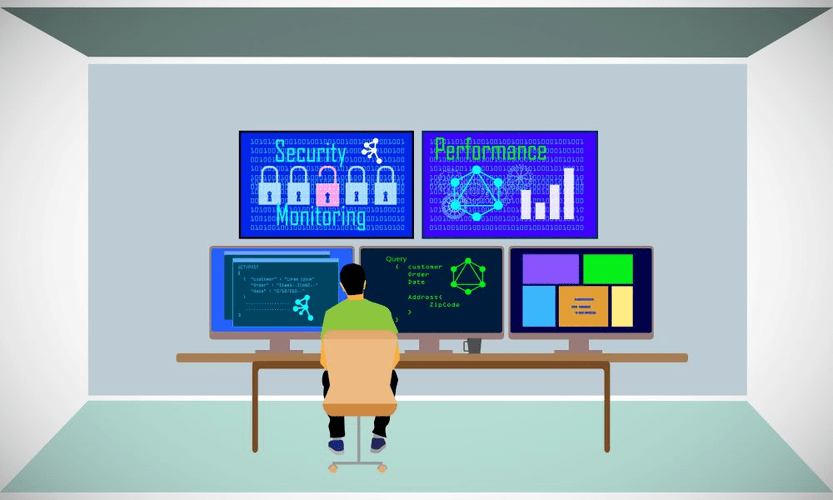Phone no: 9779851180527 or email us: info@silvercrown.com.np
Phone no: 9779851180527 or email us: info@silvercrown.com.np
Many organizations at the base maturity level will have a diversified technology stack but have started to consolidate the choice of technology and platform, this is important to get best value from the effort spent on automation. The purpose of the maturity model is to highlight these five essential categories, and to give you an understanding of how mature your company is. Your assessment will give you a good base when planning the implementation of Continuous Delivery and help you identify initial actions that will give you the best and quickest effect from your efforts.
They can implement these ideas and
automatically build, test, and deploy the new pipeline components to the target
environment. Many teams have data scientists and ML researchers who
can build state-of-the-art models, but their process for building and deploying ML
models is entirely manual. This document is for data scientists and ML engineers who want to apply
DevOps ci/cd maturity model
principles to ML systems (MLOps). MLOps is an ML engineering culture and
practice that aims at unifying ML system development (Dev) and ML system
operation (Ops). Practicing MLOps means that you advocate for automation and
monitoring at all steps of ML system construction, including integration,
testing, releasing, deployment and infrastructure management.
Tobias Palmborg, Believes that Continuous Delivery describes the vision that scrum, XP and the agile manifesto once set out to be. Continuous Delivery is not just about automating the release pipeline but how to get your whole change flow, from grain to bread ,in a state of the art shape. Tobias is currently implementing Continuous Delivery projects at several customers.

For teams just embarking on the CD journey, it can be a daunting task to try and make sense of all the frameworks, practices, tools, buzzwords and hype out there. It can also be difficult to figure out how the team is progressing on this journey. To mitigate such issues, involve developers in test design and development efforts.
Containers are a common runtime destination for CI/CD pipelines, and if they’re in use at this first stage of the continuous delivery maturity model, development teams have usually adopted Docker images defined by a Dockerfile. At the advanced level, the team will have the competence and confidence it needs to be responsible for changes all the way to production. Continuous improvement mechanisms are in place and e.g. a dedicated tools team is set up to serve other teams by improving tools and automation. At this level, releases of functionality can be disconnected from the actual deployment, which gives the projects a somewhat different role. A project can focus on producing requirements for one or multiple teams and when all or enough of those have been verified and deployed to production the project can plan and organize the actual release to users separately.
This document covers concepts to consider when
setting
up an MLOps environment for your data science practices, such as CI, CD, and CT
in ML. Therefore, many businesses are investing in their data science teams and ML
capabilities to develop predictive models that can deliver business value to
their users. To truly reach the CD zenith software engineers really have to turn all the IT “dials” to the max.
At this advanced level, teams also tackle harder deployment problems, such as multi-tier applications in which several components must deploy together, but are on different release cycles. These composite applications also include more sophisticated components, notably databases, that are complicated to deploy and test. At beginner level, you start to measure the process and track the metrics for a better understanding of where improvement is needed and if the expected results https://www.globalcloudteam.com/ from improvements are obtained. Reporting at this stage would typically include static analysis of code and quality reports which might be scheduled so that the latest reports are always accessible to facilitate decisions on quality and where improvements are needed. When moving to beginner level you will naturally start to investigate ways of gradually automating the existing manual integration testing for faster feedback and more comprehensive regression tests.
Developers can provide insight into the different test conditions that may ultimately cause tests to fail. In this way, developers can help the QA team build more comprehensive tests. QA professionals are the best equipped to help with failing builds due to tests. These faulty tests can negatively affect the development team’s confidence and potentially make the team expect, or even ignore, future failures. Legitimate failures can go undetected, and bugs may slip through more easily. Broken builds can be red flags for larger issues and also signify impediments to current — and future — workflows.
This information lets you broaden the perspective for continuous improvement and more easy verify expected business results from changes. It might seem strange to state that verifying expected business result is an expert practice but this is actually something that is very rarely done as a natural part of the development and release process today. Verifying expected business value of changes becomes more natural when the organization, culture and tooling has reached a certain maturity level and feedback of relevant business metrics is fast and accessible. As an example the implementation of a new feature must also include a way to verify the expected business result by making sure the relevant metrics can be pulled or pushed from the application.
Continuous Delivery (CD) allows automating the entire software release process. The goal is to create a trustworthy and automated process that delivers software from the developer to the user. In turn, the programmer, getting rid of almost all the manual work, works more productively.
Interesting metrics can e.g. be cycle-time, delivery time, number of releases, number of emergency fixes, number of incidents, number of features per release, bugs found during integration test etc. At a base level you will have a code base that is version controlled and scripted builds are run regularly on a dedicated build server. The deployment process is manual or semi-manual with some parts scripted and rudimentarily documented in some way. A typical organization will have one or more legacy systems of monolithic nature in terms of development, build and release.

This means no manual testing or verification is needed to pass acceptance but typically the process will still include some exploratory testing that feeds back into automated tests to constantly improve the test coverage and quality. If you correlate test coverage with change traceability you can start practicing risk based testing for better value of manual exploratory testing. At the advanced level some organizations might also start looking at automating performance tests and security scans. It supports the emerging discipline of platform engineering and can increase scalability and reactivity to unforeseen events, enabling software ecosystems to be more anti-fragile.
At the advanced level you will have split the entire system into self contained components and adopted a strict api-based approach to inter-communication so that each component can be deployed and released individually. With a mature component based architecture, where every component is a self-contained releasable unit with business value, you can achieve small and frequent releases and extremely short release cycles. The journey that started with the Agile movement a decade ago is finally getting a strong foothold in the industry. Business leaders now have begun to embrace the fact that there is a new way of thinking about software development. IT can once again start pushing innovation instead of restraining it by expensive, slow, unpredictable and outdated processes. There are many ways to enter this new era and here we will describe a structured approach to attaining the best results.